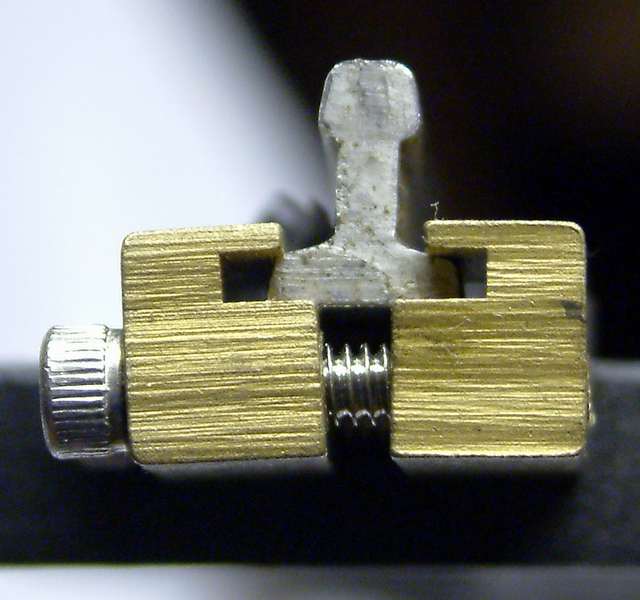Yes, the San Val - now Ana Kramer on-line - track connectors are obvious, and for some, not acceptable.
Meanwhile…
For me, I quit messing with looks and having tired of soldered jumpers, tiny screws breaking in tightening up older brass slotted connectors, and simply the hassles of sorting out electrical glitches, I replaced the failed with the chunky four-screws-on-a-base clamping method. It works! After spraying the rail, ties, and these clamps with Krylon Rusty Brown, the looks do not offend anyone that I know who watches our trains from the patio.
Yes, I am still in the groundlings category not having ended the entire electrified track saga with battery power. Alas, there are others who have not followed the light and use track power – so for those others, try these, albeit ugly, sure-fire stainless screw track connectors. Besides, they are relatively cheap. Check out “Ana Kramer” on Google and get on Al’s website.
Wendell


